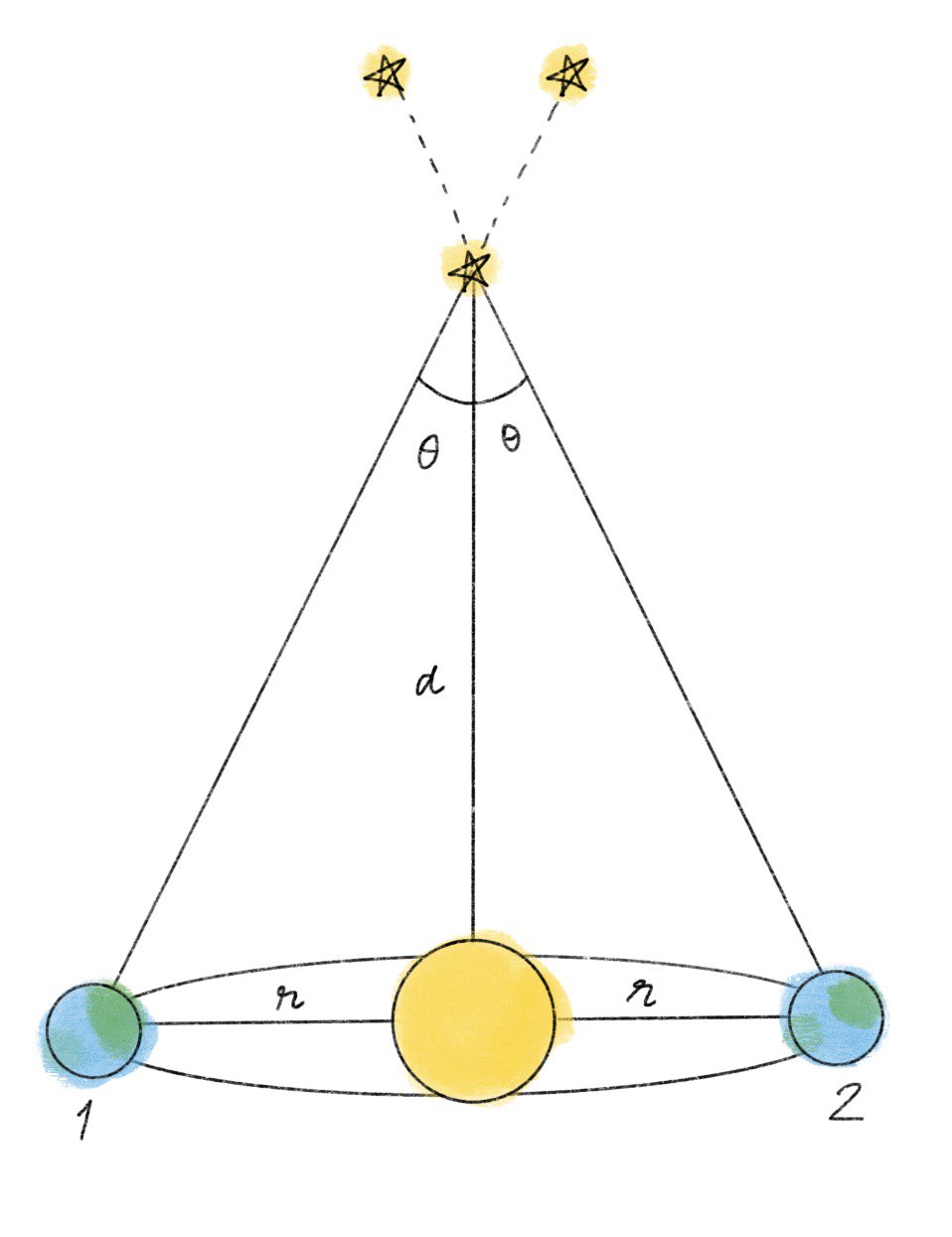Stellar Parallax
This is a basic and powerful method of finding distances to objects. It uses the knowledge of
easy high-school trigonometry.
The scale of our Solar System was first comprehended in 1761 by measuring the distance to Venus.
This was done while it made a rare transit and crossed the disk of the Sun during inferior conjunction.
Let's see how this works.
Consider two positions of an oberver observing a star at two different times from two different places as shown in the figure:

The two positions 1 and 2 are the extreme poisitons of the Earth's orbit around the Sun.
From simple trigonomery, we see that:
$$\tan{\theta} = \frac{r}{d}$$
for small angles \(\theta\) (which is the case for stars which are quite far indeed), \(\tan{\theta}=\theta\)
$$\theta = \frac{r}{d}$$
This angle is known as the parallax of the star. Naturally, the farther the star, the smaller this angle \(\theta\).
This is denoted by sometimes by \(p\).
This is the angle that the souce shifts on the sky of the observer when the obeserver moves a distance \(r\)
Having known the parallax of a star, we immediately know the distance \(d\) to the star, since we already know what \(r\) is (it's \(1\text{AU}\)).
For example, consider the parallax of the nearest star to us Proxima Centauri.
It has a parallax of 768 mas.
(Note: mas = milliarcsecond = \(10^{-3}\) arcsecond = \(\frac{1}{3600\times 10^3}\)deg = \(\frac{\pi}{180\times3600\times 10^3}\)radian)
which gives:
\[
\begin{align*}
d & = \frac{1 \text{ AU}}{768 \text{ mas}\times\frac{\pi}{180\times3600\times 10^3}} \\
& = 268574\text{ AU} \\
& = 4.03\times10^{16}\text{ m} \\
& = 1.3 \text{ pc}
\end{align*}
\]
The conversion of units can get a bit tedious. For this reason, we have the units of parsec which
make the converion from the standard unit of mas straightforward.
parsec (pc)
1 pc is \(3.086\times 10^{16}\)m.This arbitrary seeming distance is actually the distance to a star which has a parallax of exactly 1 arcsecond.
Therefore, we have a simple conversion to get the distance d to a star as: $$d = \frac{1}{p}$$ where p is the stellar parallax expressed in arcseconds.
We see that \(d = \frac{1}{768\times10^{-3}\text{as}} = \frac{1000}{768} \text{pc} = 1.3\) pc
Parallax to Parsec Converter
Enter the parallax angle in milliarcseconds (mas) and click the button or press Enter to convert it to parsec.
Distance to the star is: